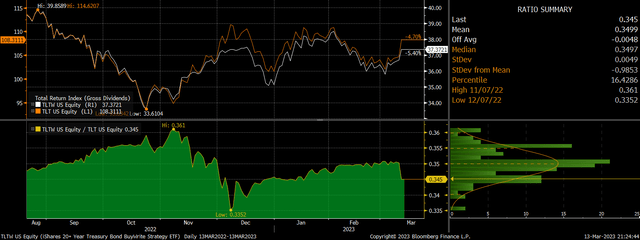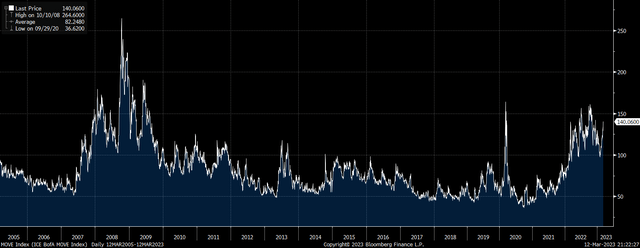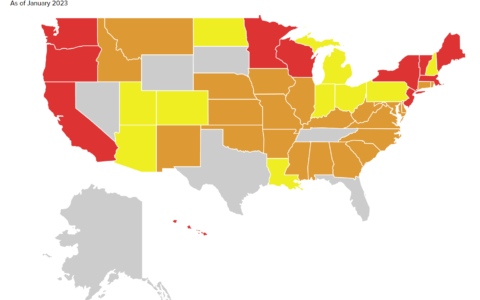In the world of investing, striking the balance between income generation and risk management is a game that every investor plays. This search for yield coupled with downside protection becomes even more crucial in the current financial environment where bond yields are elevated and interest rate fluctuations are creating volatility. In this context, the iShares 20+ Year Treasury Bond BuyWrite Strategy ETF (BATS:TLTW) presents a compelling opportunity for income-focused investors seeking to limit volatility. With an impressive yield to maturity of 10.7%, the TLTW offers an attractive risk-reward proposition that demands our attention.
A Closer Look at TLTW ETF
Let’s delve into the specifics of this ETF to understand why it might be a good fit for your portfolio. The TLTW tracks the investment results of an index that reflects a strategy of holding the iShares 20+ Year Treasury Bond ETF (TLT) while writing (selling) one-month covered call options to generate income. By selling calls that are 2.0% out of the money when written, the fund is able to enhance its yield while limiting monthly capital gains to 2%. This strategy results in the fund’s impressive yield of 10.7%, which includes the underlying yield on the TLT plus the option premium received in exchange for limiting upside potential and assuming the risk of capital losses.
One of the appealing aspects of TLTW is its low expense ratio, which stands at 0.35% after a fee waiver by iShares that will continue until 2028. This lowered cost of ownership enhances the fund’s yield, making it an even more attractive proposition for yield-hungry investors.

Performance and Volatility
The performance of TLTW is closely tied to its underlying ETF, TLT, and to the general movement of bond yields. As a result of the fund’s option-selling strategy, the TLTW tends to outperform during periods of TLT declines and underperform when TLT rises. This unique dynamic can appeal to investors seeking to limit volatility relative to the TLT itself.
Historical performance of TLTW’s strategy is illuminating. During the bull market that ended in early 2020, the Buywrite index that TLTW tracks underperformed the TLT by over 2% annually as it was unable to fully capture the major rallies seen in late-2008-early-2009 and from 2018 to early-2020. However, in the bear market that began in early 2020, the strategy has outperformed by over 8% annually. This outperformance reflects the elevated level of implied volatility in the bond market, as shown by the ICE BofA MOVE index, and the fund’s ability to capitalize on this volatility to generate enhanced yields.

Navigating the Yield Curve
Investors’ decisions between TLT and TLTW should largely hinge on their expectations for the yield curve. If you anticipate a potential bearish steepening in the yield curve from current deeply inverted levels, TLTW could be a preferable choice. This is because a gradual rise in yields, such as that observed from October 2011 to November 2018, would not necessarily prevent decent gains for TLTW. Over this period, the Buywrite strategy managed to return 3.1%, outperforming the TLT by 1.3% annually.
Interestingly, TLTW could also be a preferred option if you expect a gradual decline in bond yields. This is because there have been periods where gradual declines in bond yields have seen the Buywrite strategy outperform the TLT. For example, from August 2013 to a year later, the Buywrite strategy actually outperformed the TLT by 1.5% during a yield drop from 3.9% to 3.0%. Similar outperformance was also seen during the 60bps decline in yields in 2017 as the gradual nature of the declines resulted in limited capital losses.
Nevertheless, the best-case scenario for the TLTW would still be a collapse in bond yields. Despite significant underperformance versus TLT, the Buywrite strategy still managed to return 30% during the bond bull market seen during the Global Financial Crisis. It also returned 30% during the 2018-2020 bond bull market.
Current Market Conditions and the TLTW
Given current conditions, which are beginning to resemble those that preceded the Global Financial Crisis, there is a growing expectation of rate cuts starting by the second half of the year according to Fed funds futures markets. This anticipated monetary policy shift should keep upside pressure on both the TLT and the TLTW in the near term.
Summary
In summary, the TLTW offers investors long-term bond exposure with enhanced yield in exchange for limited upside in the event of a sharp rise in bond prices. This ETF makes sense for those looking to take advantage of elevated yields but also looking to protect against further near-term declines. It should also appeal as an alternative to TLT for those who anticipate a gradual rather than sharp decline in yields.
That said, the TLT should still be expected to post strong gains if we see a crash in yields. However, for those income investors looking to enhance their yield, limit volatility, and protect against the downside risk of interest rate increases, TLTW appears to be a compelling option. This ETF embodies the age-old wisdom of investing: “don’t put all your eggs in one basket”. By taking a balanced approach, it offers an attractive blend of high income with limited downside risk, making it a worthy consideration for any well-diversified portfolio.
Author:Com21.com,This article is an original creation by Com21.com. If you wish to repost or share, please include an attribution to the source and provide a link to the original article.Post Link:https://www.com21.com/balancing-yield-and-risk-the-case-for-investing-in-the-ishares-20-year-treasury-bond-buywrite-strategy-etf-tltw.html










